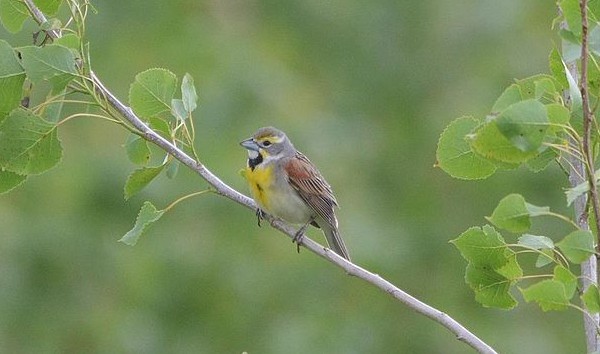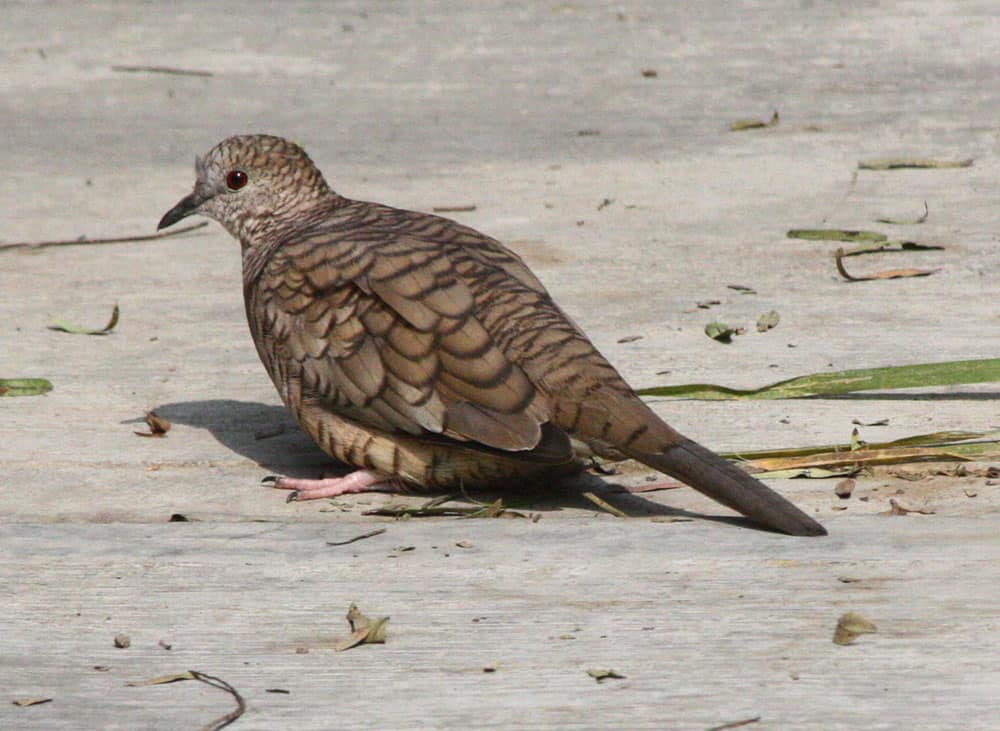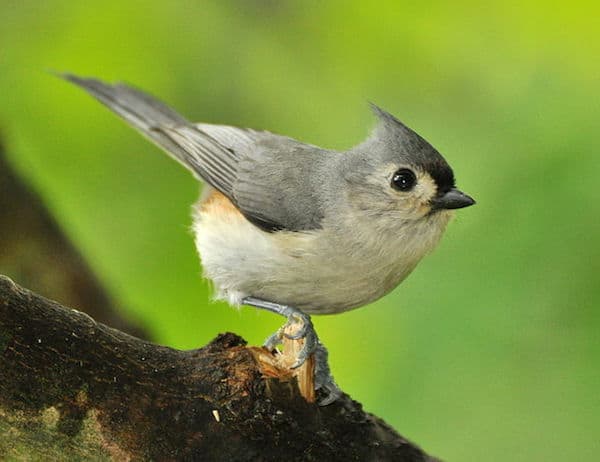Look For
Looking like a miniature meadowlark with its black V on a yellow breast, the breeding-plumaged male dickcissel has a conical pale gray bill and a chestnut shoulder patch. Winter male is faded overall. Female looks like female house sparrow but shows the rusty shoulder and a faint yellow wash on the breast. The dickcissel is about 6 ¼ inches in length.
Listen For
The dickcissel is a very vocal bird! Their song is a series of percussive notes for which the bird is named: dick-dick-dick-ciss-ciss-ell. The call, usually given in flight, is a loud, burry bzzrt!
Find It
You can find the dickcissel in North American prairie grasslands because it is one of the most typical and abundant breeding birds there. It is a common summer-breeding bird in grasslands, savannas, meadows, farm fields, and weedy pastures and fencerows. Dickcissels are very vocal birds both during the breeding season and in migration, when their flight call can be heard even when the birds are flying too high to be seen.
Feeding Behavior
During breeding season, dickcissels are omnivorous (feeding on both plant and animal matter) but during winter and migration, they are granivorous (feeding almost exclusively on seeds). They forage for invertebrates and seeds on the ground in dense foliage like grass, forbs, and low shrubs so it is hard to observe them foraging!
Nesting Behavior
Nest building occurs quickly—within one to two days after a female has settled on a male’s breeding territory and they have paired up. Both sexes pick out the nesting site, which is usually located in thick vegetation in grasses, forbs, or low woody plants but not directly on the ground. Female dickcissels construct the nest alone, a process that usually takes two to four days. Their nests are bulky, crude, insecure, and cup-like in appearance. Three to six eggs are laid and incubated for 12 to 13 days. After hatching, baby dickcissels leave the nest in 8 to 10 days. Male dickcissels do not participate in any aspect of care except territory defense.
Wow!
Dickcissels, like some other grassland-breeding birds, have a breeding range that expands and contracts from year to year, depending on the amount of local rainfall.




